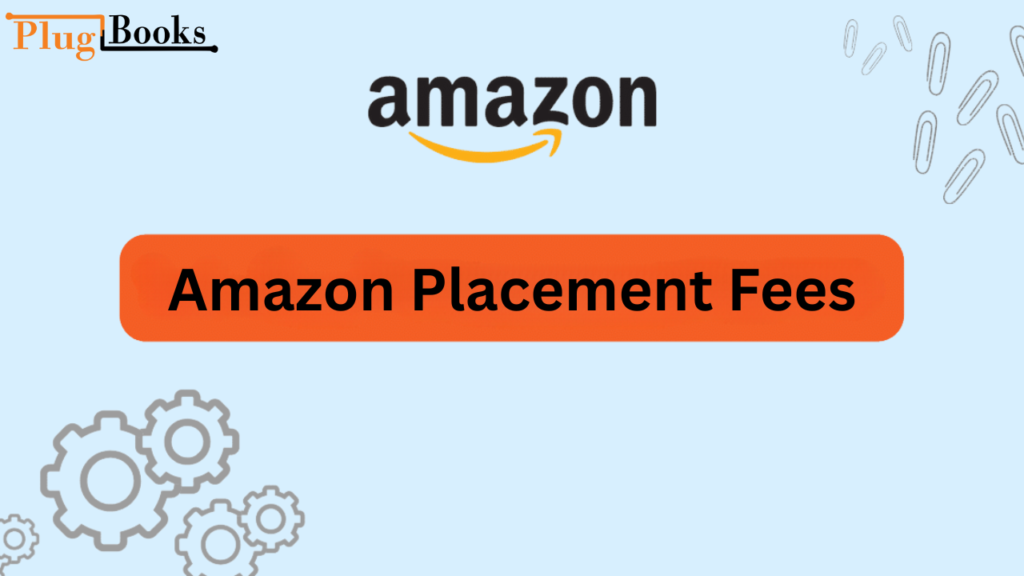One of the most crucial things an Amazon seller has to know is how fees affect your company. Of all the fees sellers pay, your bottom line may be much affected by the Amazon placement fees. Sending your goods to Amazon’s fulfillment facilities—where they are kept and delivered to consumers—is linked with these fees.
Everything you need to know about Amazon placement fees—including Amazon inbound placement fees, Amazon FBA placement fees, and techniques to either completely decrease or avoid these expenses—will be broken out in this blog post. In conclusion, you will have the knowledge to control these expenses and guarantee seamless operation of your company.
Key Points:
- One can easily pay Amazon placement fees. Know and organize for them.
- Choose appropriate fulfillment centers and streamline shipping.
- Sell smaller, lighter products; lower costs, better margins.
- For large goods, use FBM; it will help to save delivery expenses.
- Plugbooks helps to simplify finances by automating with accounting tools.
What Is the Amazon Placement Fee?
The Amazon placement fee to Amazon’s fulfillment facilities—where they will be kept and sent to consumers—is known as the Amazon placement fee. The weight and size of your products as well as the number of fulfillment facilities your inventory is sent to affect this price. Understanding how to control these expenses can help you simplify your processes and raise your general profit margins.

Amazon Inbound Placement Fee Explained
The Amazon inbound placement fee is especially connected to the inventory delivery to Amazon’s fulfillment facilities. Amazon could ask you to send your goods to several sites to guarantee quicker consumer delivery times. This price is paid when several fulfillment facilities handle your merchandise.
Knowing how this price is calculated will enable you to better arrange your shipments and cut unneeded expenses.
Amazon FBA Placement Fee: What You Need to Know
Part of the larger Fulfilment by Amazon (FBA) business, the Amazon FBA placement fee pays for storage, selection, packaging, and delivery of your goods. The weight and quantity of your goods will affect these expenses; they usually increase during busy times (such as the holidays).
Although Amazon needs these fees to manage your products, it’s crucial to know them so you can include them into your pricing and general cost structure.
How to Avoid Amazon Placement Fees
Although total avoidance of it is impractical, with the correct techniques you can decrease them. These pointers will help you cut these costs:
Separate Standard-Sized and Oversized Items: Splitting these two groups before developing your shipping strategy helps you avoid more expensive items bloating the cost of smaller ones.
Optimize Product Selection and Packaging: Emphasize smaller, lighter products with better profit margin. These will maximize your income possibilities and help to keep your inbound placement fees low.
Avoid Shipping to Western Fulfillment Centers: Certain fulfillment facilities, like those on the West Coast, often charge more for shipments. You might save money by directing shipments to fulfillment facilities elsewhere.
Leverage FBM for Bulky or Slow-Moving Products: Use Fulfilment by Merchant (FBM) if your products are bulk or slow-moving and processing and shipping your products would be more affordable via FBM.

How Plugbooks Supports Amazon and eBay Sellers
Integrating easily with systems like QuickBooks and Xero, Plugbooks is an accounting tool that automates the financial operations of Amazon and eBay businesses. To guarantee accurate and timely financial reporting, sellers can monitor sales, expenses, taxes, and fees—including it—by means of Amazon tracking tools.
This application removes the labor-intensive bookkeeping tasks so you may concentrate on business scalability.
Conclusion:
Any seller trying to maximize profitability must navigate Amazon placement fees complexity. Understanding the several forms of placement fees—Amazon inbound placement fees and Amazon FBA placement fees—allows you to proactively control and lower these expenses. Using solutions like Plugbooks.io to automate your financial tracking will also enable you to keep your company’s finances in order and current.
Investing time to learn about these costs and how to control them will pay off over time, thereby improving the profitability of your Amazon selling experience.

FAQs:
1. What are Amazon placement fees?
It’s a charge for shipping goods to Amazon’s fulfillment facilities.
2. What’s the difference between inbound and FBA placement fees?
Inbound Placement Fee: Charged for shipping to multiple centers.
FBA Placement Fee: Covers storage, picking, packing, and shipping.
3. How can I avoid placement fees?
Optimize shipping to minimize fees; use FBM for large quantities; and market smaller, lighter products.
4. Can placement fees change?
Indeed, they can rise around holidays and other busiest times.
5. How does Plugbooks help?
Tracking Amazon fees and spending, Plugbooks links with QuickBooks and Xero for simple financial control.


